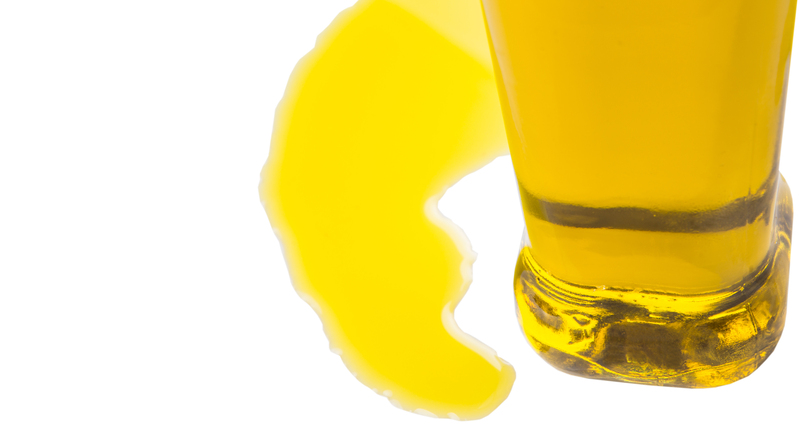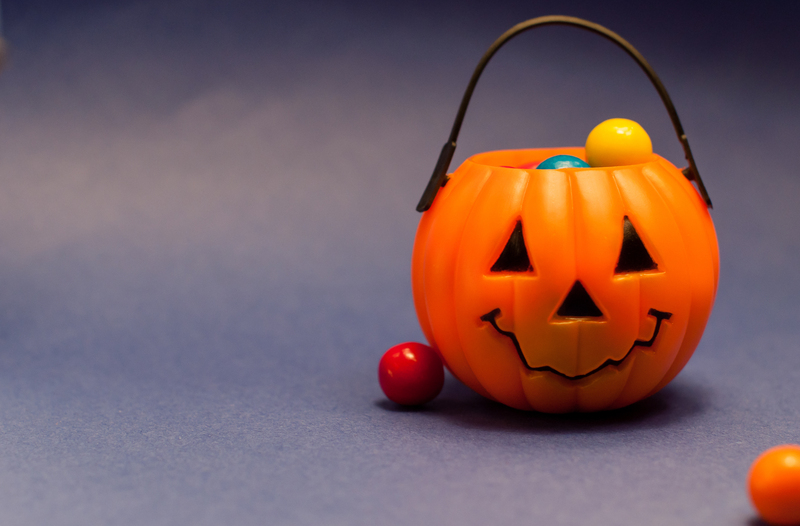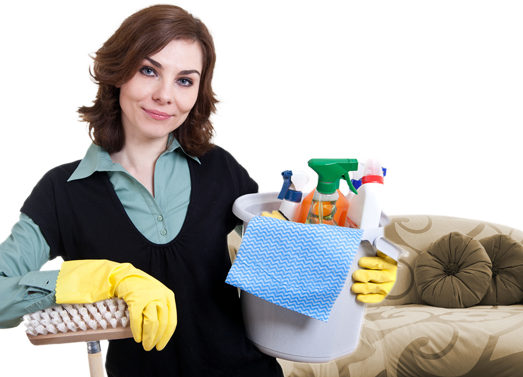Exploring Velvet Curtain Care: Dos and Don'ts
Posted on 02/06/2025
Exploring Velvet Curtain Care: Dos and Don'ts
Velvet curtains are synonymous with luxury, elegance, and sophistication. Their plush texture and rich appearance make them stand out in any room, but caring for velvet curtains requires a dedicated approach to maintain their charm and longevity. Whether you are a proud owner of vintage velvet drapes or have recently installed modern velvet panels, proper maintenance is key. In this comprehensive guide, we will explore the essential dos and don'ts of velvet curtain care, ensuring that your curtains remain stunning for years to come.

Understanding Velvet: Fabric Characteristics and Challenges
Before diving into curtain cleaning and maintenance, it is important to understand what makes velvet unique:
- Texture: Velvet is a woven fabric with evenly cut dense fibers that create a soft, tufted surface known as the 'pile'.
- Luster: The pile orientation gives velvet its characteristic sheen, but it also means the fabric can be easily flattened or marred if handled improperly.
- Sensitivity: Velvet is susceptible to moisture, pressure, and certain cleaning methods, making it essential to treat it with care.
Types of Velvet Found in Curtains
- *Silk Velvet* - Exquisite, natural, and delicate, often used in high-end curtains.
- *Cotton Velvet* - Durable and affordable, a popular choice for window treatments.
- *Synthetic Velvet* - Made from polyester or nylon, offering greater stain resistance and easier care.
Tip: Identifying your velvet curtain fabric is essential before you begin any cleaning or maintenance routine.
Why Proper Velvet Curtain Care Matters
Regular and correct velvet curtain cleaning not only preserves their physical beauty but also extends their lifespan and maintains their health benefits by reducing dust and allergens. Well-maintained velvet drapes can:
- Maintain their vibrant color and plush feel.
- Prevent unsightly flattening or marks on the fabric.
- Reduce the risk of staining and damage.
- Enhance indoor air quality by removing dust and pollutants.
The Dos: Essential Steps for Proper Velvet Curtain Care
1. Do Read Care Labels Carefully
Before attempting any velvet curtain cleaning, always check the manufacturer's instructions. These labels provide valuable information on the recommended washing methods, water temperature, and suitable detergents.
2. Do Vacuum Regularly
Vacuuming velvet drapes with a soft brush attachment is the safest way to remove dust and prevent buildup:
- Use a low-suction setting.
- Gently glide the brush along the direction of the pile.
- Do this at least once a month to keep your curtains fresh and vibrant.
3. Do Spot Clean with Care
Accidents happen, but swift action can save your velvet curtains:
- Use a soft, absorbent cloth to blot (not rub) spills immediately.
- Dampen the cloth with cold water or a mild velvet-safe cleaner.
- Test any cleaning solution on an inconspicuous area first.
- Blot gently rather than rubbing, to avoid crushing the pile.
4. Do Steam to Remove Wrinkles and Restore Pile
Steaming is an effective way to refresh velvet curtains, eliminate wrinkles, and raise the pile:
- Use a handheld garment steamer at a safe distance (about 2 inches from the fabric).
- Move in vertical strokes, following the direction of the pile.
- Let the curtains air dry completely.
5. Do Air Curtains Out Periodically
Ventilating your velvet drapes helps prevent mustiness and preserves their richness. Open your windows or take the curtains outside on a dry, breezy day--just be sure to keep them away from direct sunlight.
6. Do Professional Cleaning Annually
For deep cleaning, especially with silk velvet or lined curtains, it's best to call in the professionals. Dry cleaning experts understand the intricacies of velvet care and can revive your curtains without risking damage.
The Don'ts: Mistakes to Avoid in Velvet Curtain Care
1. Don't Machine Wash Unless Specified
Avoid machine washing your velvet curtains unless the care label clearly says it is safe. The strong agitation and spinning can cause permanent creases, shrinkage, and pile crushing.
2. Don't Rub or Scrub the Fabric
Rubbing, scrubbing, or brushing aggressively can flatten the pile and leave irreparable marks. Always treat velvet curtain cleaning as a gentle process.
3. Don't Iron Directly
Never run a hot iron over velvet! The heat and pressure can scorch the fibers and destroy their signature texture. If necessary, use a steamer or iron from the reverse side with a cloth barrier and minimal pressure.
4. Don't Use Harsh Chemicals or Bleach
Bleach, ammonia, and strong detergents can ruin velvet's color and texture. Stick to mild, pH-neutral cleaning agents formulated specifically for delicate fabrics.
5. Don't Expose Curtains to Direct Sunlight
Continuous exposure to sunlight leads to fading and fiber degradation. Use a lining, window film, or reposition your drapes to minimize UV damage and preserve your velvet curtains' color.
6. Don't Hang or Store Velvet When Wet
Moisture can result in stretching, misshaping, or mildew growth. Always ensure velvet curtains are completely dry before rehanging or storing them in a cool, dry place.
Comprehensive Velvet Curtain Cleaning Techniques
Vacuuming Velvet Curtains the Right Way
- Set your vacuum to its lowest suction power.
- Attach a soft upholstery brush (never use a beater brush).
- Start at the top and work your way down, *following the direction of the pile*.
- Repeat monthly or more often in high-traffic rooms.
Note: Over-vacuuming can be detrimental. Aim for a gentle refresh rather than deep abrasion.
How to Safely Remove Velvet Curtain Stains
For minor spots:
- Gently blot the area with a barely damp cloth.
- Use distilled water or a gentle, velvet-friendly cleaning solution.
- Never allow water to soak through the fabric--velvet's pile can trap moisture, making it difficult to dry.
If the stain persists, it may be best to consult a specialist rather than risk further damage.
Hand Washing vs. Dry Cleaning
- Hand washing: Suitable only for certain synthetic velvets; use cool water and a small amount of gentle detergent. Submerge briefly, rinse thoroughly, and blot dry without wringing.
- Dry cleaning: Recommended for silk, cotton velvet, or lined curtains. Professional services utilize solvents and careful handling to avoid pile damage.
Dealing with Odors and Mustiness
- Air the curtains outdoors in the shade for several hours.
- Place bowls of baking soda or activated charcoal near the curtains to absorb lingering smells.
- Avoid using scented sprays, which may leave residue or stain.
Special Considerations for Different Velvet Types
Silk Velvet Curtain Care
Silk velvet is delicate, sensitive to moisture and light. Never attempt home washing; always opt for professional dry cleaning. Handle minimally and install away from direct sun or steamy kitchens.
Cotton and Synthetic Velvet Curtain Care
Cotton velvet is more robust but still benefits from gentle, regular cleaning. Many polyester velvets are machine-washable, but always follow the care label's precise directions. For both, minimize contact with water and dry completely before rehanging.
Lined Velvet Curtains
The inner lining can complicate cleaning--inspect both fabric and lining before spot cleaning and err on the side of caution.
Prolonging the Life and Beauty of Your Velvet Curtains
Proper Installation and Handling
- Install heavy-duty rods and brackets to bear the weight of velvet.
- When moving curtains, *support their full weight* to avoid stretching the fabric.
- Use clean, dry hands or gloves to prevent oil stains and smudges on the material.
Storing Velvet Curtains
- Clean and dry the curtains thoroughly before storage.
- Roll rather than fold to avoid creases.
- Wrap in a breathable cotton sheet or muslin bag.
- Store in a cool, dry, dark space to prevent fading and mildew.

Frequently Asked Questions About Velvet Curtain Care
Can I iron my velvet curtains?
No, direct ironing is never recommended. Use a steamer held at a slight distance, or press from the reverse side using a protective cloth on a low heat setting.
Can I wash velvet curtains in the washing machine?
Only if your care label specifically states that machine washing is safe, which is rare and typically limited to some synthetic varieties. When in doubt, air or dry clean.
How do I bring back the plush look of crushed velvet?
Gently steaming and lightly brushing the pile in the direction of the nap can help restore its texture. A velvet brush can also lift the fibers if used carefully.
How often should velvet curtains be cleaned?
- Light vacuuming - monthly
- Professional cleaning - at least once a year
- Spot cleaning - as needed for spills or marks
Conclusion: Mastering the Art of Velvet Curtain Care
In summary, exploring velvet curtain care dos and don'ts is essential for maintaining the beauty, texture, and longevity of your luxurious drapes. By:
- Regularly vacuuming with a gentle tool,
- Spot cleaning delicately,
- Resisting the urge to machine wash or iron,
- Choosing professional cleaning for deep care,
- and storing your curtains properly,
Remember: when it comes to velvet curtain cleaning, a gentle touch and a bit of extra attention make all the difference. Treat your velvet drapes with the care they deserve, and they will reward you with enduring beauty and timeless elegance in your home decor.
```



